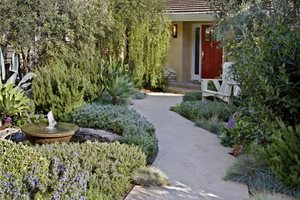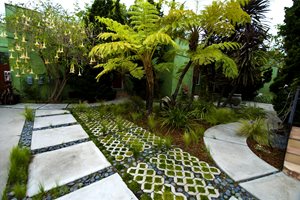11 Low-Maintenance Backyard Landscaping Ideas
Discover 11 ways to reduce the maintenance requirements in your backyard
1. Opt for Meadow Plantings
The owners of this yard no longer have children at home and requested that their new garden be lawnless. Instead, an intersecting grid of poured concrete pavers provides the framework for garden beds of mixed meadow plantings. Carex pansa, a native plant, makes up most of the meadow planting, with colorful kangaroo paws enlivening the design. This approach reduces water usage and does not need frequent mowing like a traditional lawn.
See more of this yard: Rear Courtyard Garden Offers a Place of Solace
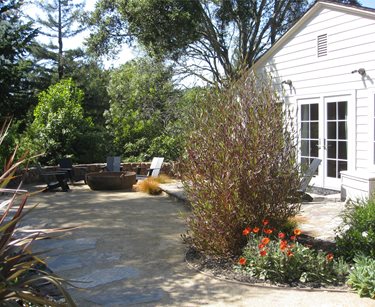
2. Do Away with Your Lawn
This outdoor space was once a patchy lawn that required a lot of maintenance. The homeowners decided that they would be happier with a low-maintenance backyard that still suits the needs of their children and dogs. So the solution was to get rid of the grass and replace it with decomposed granite, flagstone paths, and low-maintenance, drought-resistant plants. They also added a fire pit made from a retrofitted rustic cauldron.
Learn more about this backyard: Lawnless Family Garden
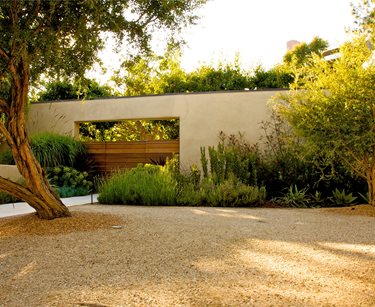
3. Select Plants that Require Little Water & Care
The plants and trees in this walled backyard in Malibu, Calif. thrive on little water and rarely need to be pruned or cut back. During the hottest months, they may require extra watering to keep them looking their best, but overall these plants are drought tolerant. Bi-annual trimmings in the spring and fall may be necessary for some of the plants, but for the most part they will look great without having to lift a finger.
Find out more about this project: Drought-Tolerant Outdoor Living Space
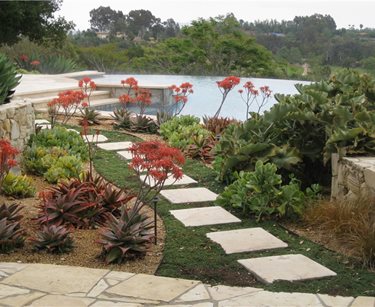
4. Pick Plants Adapted to Your Local Climate
In this San Diego backyard, succulents and a carpet of thyme provide unique forms and vivid color contrasts, while being able to adapt to the local climate. When selecting plant material it is important to consider water requirements, especially in a Mediterranean-type climate where water is a luxury. Plants that are in tune with the environment's limitations will help minimize water and maintenance needs. Here, the plants are automatically watered with drip irrigation.
See more of this backyard: Vanishing-Edge Pool Enhances Lakeside Vista
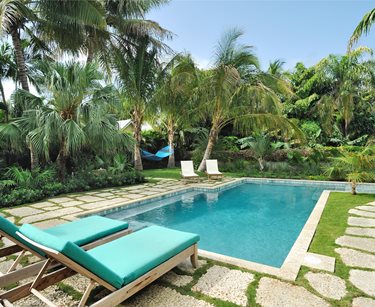
5. Make Sure Your Plants Are Pool Friendly
While at first glance, this looks like a lush tropical oasis, this backyard and pool were designed with maintenance in mind. Because it is a Key West vacation home, and the owners are away from the property much of the year, they wanted as little upkeep as possible. Zoysia grass was planted between the paving stones around the pool because it is slow growing, making it low-maintenance. Furthermore, plants near the water were selected carefully so that they would not shed their leaves or drop other debris into the water. Ficus Green Island was planted behind the pool for its dark green foliage and resistance to shedding leaves.
Discover more of this backyard’s story: Key West Hideaway
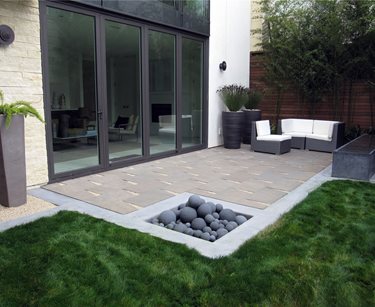
6. Plant a No-Mow, Low-Water Lawn
For many people, giving up their lawn is tough, especially if you have kids or pets that need the open space. This urban backyard in San Francisco was designed to be a hassle-free retreat. Its lawn was planted with a no-mow, low-water variety of grass that grows in thick like a shag carpet. While called no-mow, this type of lawn can be trimmed back occasionally if you prefer a more manicured look, or you can let it grow long and allow the blades of grass to lay over sideways for a more natural appearance.
Check out the rest of this project: Contemporary Urban Garden
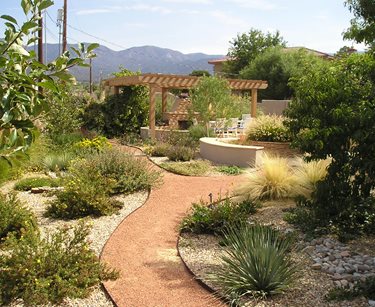
7. Go Xeric
This Albuquerque backyard has an outdoor fireplace and pergola surrounded by xeriscaped planting beds. Xeriscaping is a type of landscaping in which plants that can thrive with as little supplemental water as possible are selected. A xeriscape does not have to be a colorless vista of cacti, you can cut back on your supplemental water use and still enjoy a lush and vivid landscape like this one.
Get more information on xeriscaping
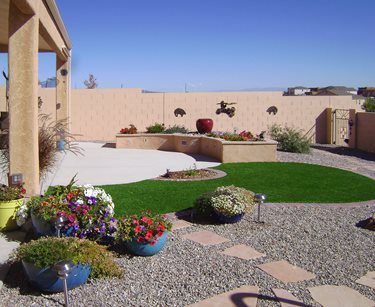
8. Install Artificial Turf
Another popular low-maintenance option, especially among desert-dwellers, is artificial grass. In recent years, synthetic grass has gotten a lot closer to the look and feel of the real thing. This option is attractive to many because you will have green lawn all year long without ever watering or mowing. Artificial lawn can be used in a small area, as was done in this New Mexico backyard, or it can be used for a large space.
Learn more about artificial turf
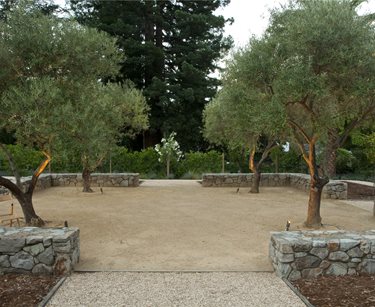
9. Cover the Ground with Decomposed Granite
When it comes to maintenance, this backyard design requires very little effort. Anchored by low stone walls and four olive trees, this decomposed granite patio offers extra space to set up tables when hosting a party or can be used for a game of bocce ball. Many people would have planted a lawn in this space, but this option requires much less maintenance and still looks great. After heavy use the decomposed granite may need a little raking to smooth it back out and every few years it will need replenishing as some of the rock works its way into the soil.
Find out more about decomposed granite

10. Grow Ornamental Grasses
This suburban backyard has a modern style with various colored concrete patios acting as outdoor rooms. Between the concrete slabs ornamental grasses were planted to provide greenery and texture. These grasses have been growing a few years and have filled in nicely. A thick layer of mulch keeps water from a drip irrigation system from evaporating too quickly. Ornamental grasses are easy to care for, just cut them back once a year and watch them come back healthier than ever.
Get more ideas for landscaping with ornamental grasses

11. Plant Evergreens and Perennials
Once you step out the backdoor of this New Jersey home you may think you’ve been transported to an English garden. A combination of evergreens and perennials provides structure, texture and color to this unique design. Evergreens are great low-maintenance plants because they require only occasional trimming and will look nice all year, even in cold climates. On the other hand, perennials are great because they return each year to provide colorful blooms in the spring and summer months, you don’t have to replant each season as you do with annuals.
See more plants that look good in winter

 Backyards
Backyards
 Front Yards
Front Yards

